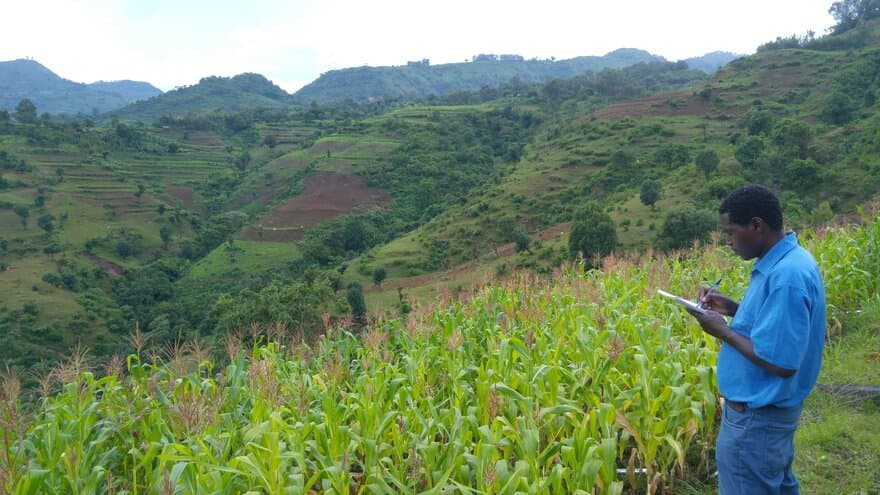In his PhD, Kebede Wolka Wolancho, has examined the effects of soil and water conservation management in southwest Ethiopia. His results show that the examined measures reduce surface runoff and soil loss, while improving crop yield.
Sub-Saharan African soils are threatened by severe soil erosion. Without effective protection measures, soil erosion by water removes fertile topsoil particularly on sloping lands, affecting agricultural production and food safety.
In Ethiopia, the government has been promoting the use of cross slope barriers to reduce soil erosion and aid sustainable food production on sloping cropland. In addition, enset (Ensete ventricosum)-based home gardens, a traditional form of land management, contributes to food security in southwestern Ethiopian highlands.
Homegardens and soil loss prevention
In his PhD, Kebede Wolka Wolancho has documented how soil and yield properties are affected by enset-based homegardens and stone bunds.
“I have conducted field experiments and observational and modeling studies were conducted in the sloping, cultivated highlands of Dawuro, southwest-Ethiopia,” Wolancho says.
“This is an area with extensive erosion, and little use of chemical fertilizers.”
Cross slope barrier soil and water conservation techniques in the region include soil bunds, stone bunds, bench terraces, grass strips, hedge rows, tied ridges and the so-called Fanya juu, a form of traditional soil terrace.
Little erosion in homegardens
Enset is a dominant plant in homegardens, and important for food security in the region. Typical land management in traditional enset-based homegardens, based on the return of manure and household waste and minimum tillage, resulted in soils less sensitive to erosion, with significantly increased concentrations of organic matter and nutrients.
Consequently, the soil erosion in enset-based homegardens was small compared to that in adjacent intensively tilled cropland.
“This indicates that these homegardens are a sustainable form of land management, enhancing soil quality,” Wolancho says.
Transported over large distances
Soil bunds on tilled clay loams in the highlands reduced surface runoff, and the loss of soil, soil organic carbon, and major plant nutrients by at least 90%. Recorded soil losses were particularly high in the two months after planting maize, but before canopy closure.
“The annual loss of soil organic carbon, due to erosion, amounted to about 6% of the total stock in the plow layer,” Wolchano comments.
A major fraction of soil loss consisted of very fine material, suspended in runoff. The suspended fraction was relatively rich in soil organic carbon and nutrients. This fraction was transported over large distances to streams and rivers and may have adverse effects on the aquatic system of the river basins and impact hydro-power plants.
Large amounts of sediment
After 8-14 years, permanent structures like stone bunds accumulated significant amounts of sediment, resulting in the formation of relatively flat terraces in the area between the stone bunds. Terraces were found to have a clear spatial pattern in soil quality with an increase in the silt fraction, the concentration of soil organic carbon, plant nutrients and the soil water retention capacity along the flow line from the upper stone bund to the next.
“The improved soil quality on the terrace along the flow line resulted in a significant increase in crop yield,” he comments.
Farmers are advised to maintain home gardens around the homesteads and soil and stone bunds on cropland further afield to protect the soils from erosion as an important elements of sustainable food production on steep hill slopes in the region.
Cost-effective and improving yield
“The measures reduce surface runoff and soil loss, while improving crop yield,” Wolancho says.
The effect on crop yield varies with rainfall and slope, but most of them improve crop yields in low rainfall areas.
“Fanya juu and soil bunds are effective on relatively gentle slopes, while hedgerows and stone bunds are effective even on moderately steep slopes.”
“In most cases, they are economically feasible, due to improved crop yield and low labor opportunity costs,” he concludes.
Fakta

